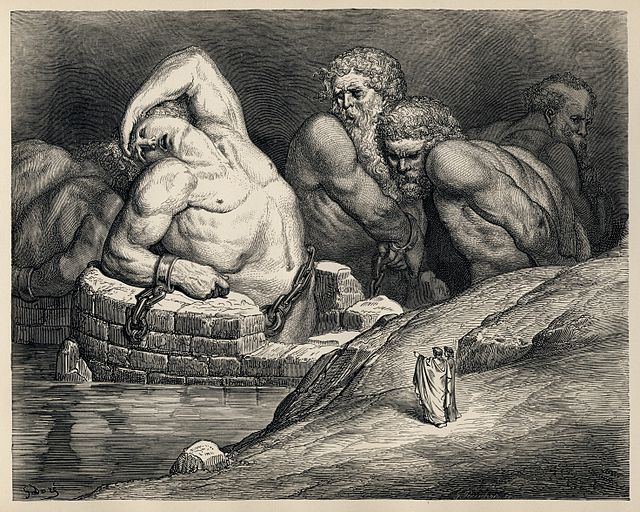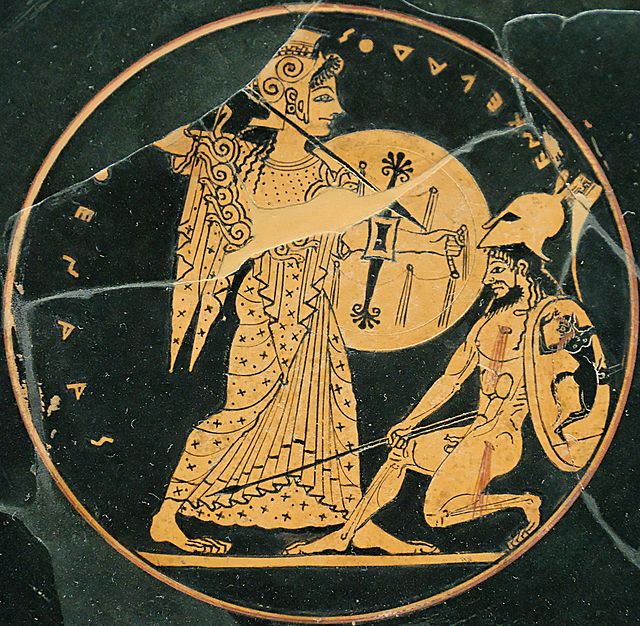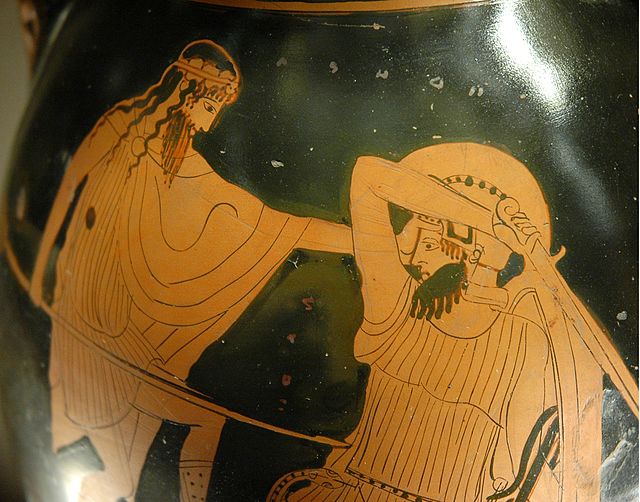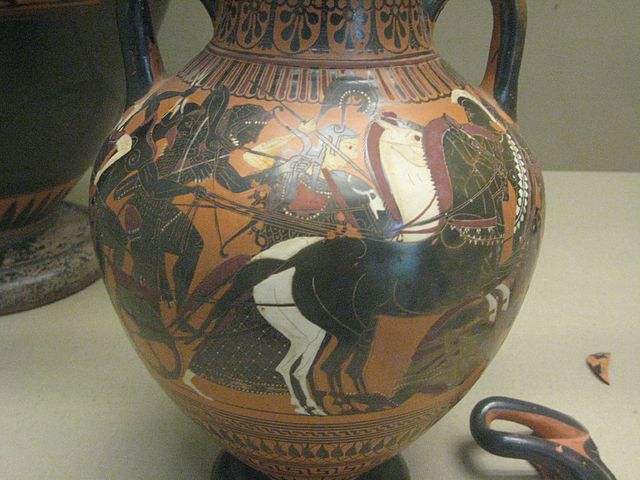In Greek mythology, the Aloadae or Aloads were Otus or Otos and Ephialtes, Thessalian sons of Princess Iphimedia, wife of Aloeus, by Poseidon, whom she induced to make her pregnant by going to the seashore and disporting herself in the surf or scooping seawater into her bosom. From Aloeus, sometimes their real father, they received their patronymic, the Aloadae. They had a sister Pancratis (Pancrato) who was renowned for her great beauty.
Titans and Giants, including Ephialtes on the left, in Gustave Doré's illustrations to Dante's Divine Comedy.
In Greek and Roman mythology, the Giants, also called Gigantes, were a race of great strength and aggression, though not necessarily of great size. They were known for the Gigantomachy, their battle with the Olympian gods. According to Hesiod, the Giants were the offspring of Gaia (Earth), born from the blood that fell when Uranus (Sky) was castrated by his Titan son Cronus.
Poseidon (left) holding a trident, with the island Nisyros on his shoulder, battling a Giant (probably Polybotes), red-figure cup c. 500–450 BC (Cabinet des Médailles 573)
Athena (left) fighting the Giant Enceladus (inscribed retrograde) on an Attic red-figure dish, c. 550–500 BC (Louvre CA3662).
Dionysus (left) with ivy crown, and thyrsus attacking a Giant, Attic red-figure pelike, c. 475–425 BC (Louvre G434).
A depiction of the Gigantomachy showing a typical central group of Zeus, Heracles and Athena. black-figure amphora in the style of the Lysippides Painter, c. 530-520 BC (British Museum B208).





